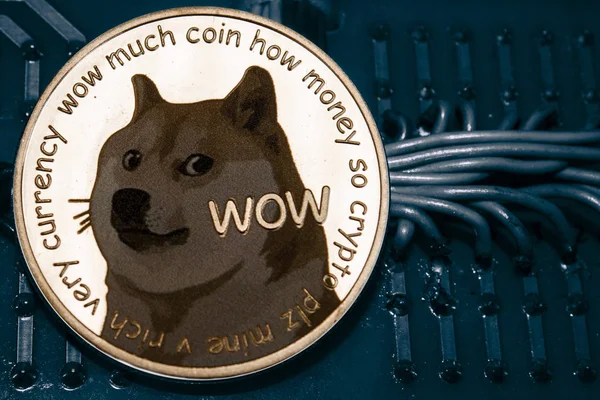Creating a GIF meme is a fun way to add humour and animation to your online interactions.

Here’s a general breakdown of the process:
- Choose your tools: There are several options for making GIF memes, from free online platforms to mobile apps. Some popular choices include GIPHY (https://giphy.com/), VEED (https://www.veed.io/), and Kapwing (https://www.kapwing.com/).
- Pick your content: You can use existing GIFs, upload your own videos or images, or even create text-only animations. Popular GIF meme formats often involve a funny video clip with captions overlaid on top.
- Edit and customize: Most GIF meme creation tools allow you to add captions, change fonts and colours, crop or resize your GIF, and even add stickers or emojis for extra flair. Play around with the editing features to make your meme unique.
- Export and share: Once you’re happy with your creation, export it as a GIF file. Many platforms allow you to directly share your GIF meme to social media or save it to your device.
Here are some additional tips for making a great GIF meme:
- Keep it short and sweet: Attention spans online are short, so aim for a GIF that’s under 10 seconds long.
- Make it relatable: Choose a concept or reference that your target audience will understand and find funny.
- Clear and concise text: Use easy-to-read fonts and keep your captions short and punchy.
With a little creativity and these steps as a guide, you’ll be making hilarious GIF memes in no time!
Origin of GIF Memes
The origin of GIF memes can be traced back to the format’s early days, even before the widespread use of the internet we know today. Here’s a breakdown of some key points:
- The GIF format itself: Invented in 1987 by Steve Wilhite at CompuServe, GIFs were originally used for compressing and transferring images efficiently on slow dial-up connections. The ability to have multiple images in a single file laid the groundwork for animation.
- Early adopters: While not exactly memes in the modern sense, web developers in the early 1990s started using animated GIFs for eye-catching graphics and basic animations on websites. Think blinking text or dancing cartoon figures.
- The rise of online communities: As online forums and message boards gained popularity in the mid-1990s, people started sharing short, funny video clips in various formats. These often included early versions of memes, like silly reaction clips or image macros (text overlaid on static images).
- The looping GIF takes centre stage: In 1995, Netscape Navigator introduced the ability for animated GIFs to loop continuously. This revolutionized their use for short, funny animations, a perfect fit for the meme-sharing culture of online communities.
- Viral moments and meme classics: The late 1990s and early 2000s saw the rise of some of the earliest viral GIF memes. Think “Dancing Baby,” “Hamster Dance,” and the infamous “Leave Britney Alone” reaction GIF. These pioneered the use of GIFs for humour, cultural commentary, and expressing emotions online.
While the exact first GIF meme is hard to pinpoint, the interplay between the GIF format’s technical capabilities and the growing online communities in the mid-1990s created the perfect breeding ground for what we now know as GIF memes.
Difference between GIF & Video Memes
GIFs and video memes share some territory, but there are key differences between the two:
File format and size:
- GIFs: Technically a series of images played in quick succession to create an animation. GIFs are limited in length (often under 10 seconds) and have a smaller file size due to this compressed format. This makes them ideal for fast loading on web pages and social media.
- Video memes: Use a dedicated video format like MP4, allowing for smoother motion, higher quality, and potentially longer clips. However, the file size is usually much larger than a GIF.
Sound:
- GIFs: Silent. They rely solely on visuals to convey the message.
- Video memes: Can include sound effects, music, or dialogue, adding another layer of humour or storytelling.
Complexity:
- GIFs: Simpler format, often featuring short snippets of video clips with basic editing like text overlays.
- Video memes: Can be more elaborate, with intricate animations, transitions, and effects.
Use cases:
- GIFs: Perfect for quick reactions, and responses, and adding a touch of humour to online interactions. Their small size makes them ideal for social media sharing.
- Video memes: Can be used for a wider range of purposes, from short comedic skits to more informative or educational content. They might be used on social media platforms but their larger size might make them better suited for other sharing methods.
In a nutshell: GIFs are like bite-sized jokes, relying on visuals and brevity. Video memes can be more versatile, offering sound, richer content, and potentially longer narratives.
Future of GIF Memes
The future of GIF memes is a bit of a mixed bag. Here’s a breakdown of some potential trends:
Possible challenges:
- Competition: Newer meme formats like short videos (e.g., TikTok clips) or interactive elements might steal some of the spotlight.
- Technical limitations: The GIF format itself might struggle to keep pace. Its limitations on length, quality, and sound could make it seem dated compared to evolving video options.
Reasons for optimism:
- Enduring appeal: The simplicity and instant readability of GIFs could still hold a special place. They can be a great way to express emotions or humour quickly and universally.
- Evolution, not extinction: GIFs might adapt and integrate with newer technologies. Imagine GIFs with embedded sound effects or interactive elements triggered by certain clicks.
- Niche appeal: Even if not the dominant meme format, GIFs could thrive in specific communities or for nostalgic users who appreciate the classic style.
Overall, the future of GIF memes might involve coexistence with video memes, each format catering to different strengths and use cases. Innovation could also play a role, with GIFs potentially incorporating new features to stay relevant.
Here are some additional thoughts:
- Focus on creativity: As video memes become more common, creativity in using the GIF format could become even more important for GIF memes to stand out.
- GIFs as a cultural touchstone: Classic GIF memes might evolve into a recognizable visual language, understood and referenced across future meme formats.
Ultimately, the longevity of GIF memes will depend on how they adapt to the changing online landscape and how creators continue to leverage their unique strengths.

